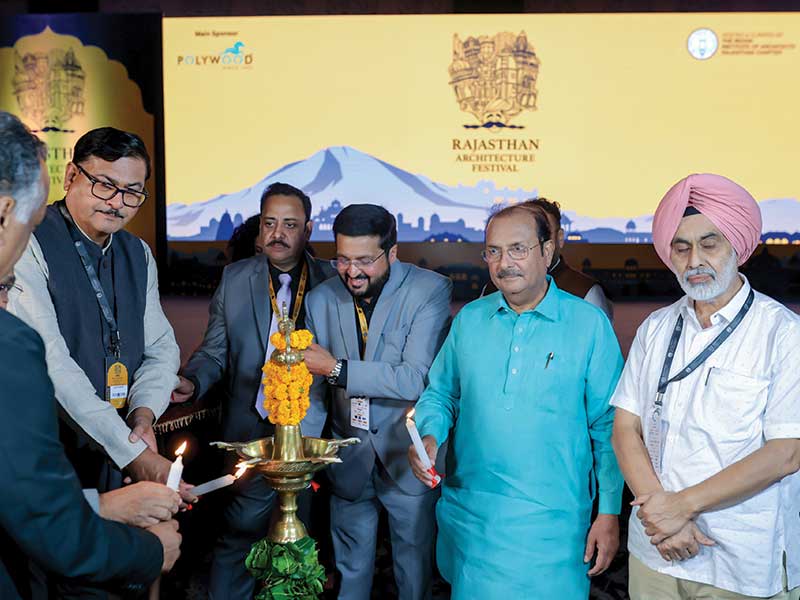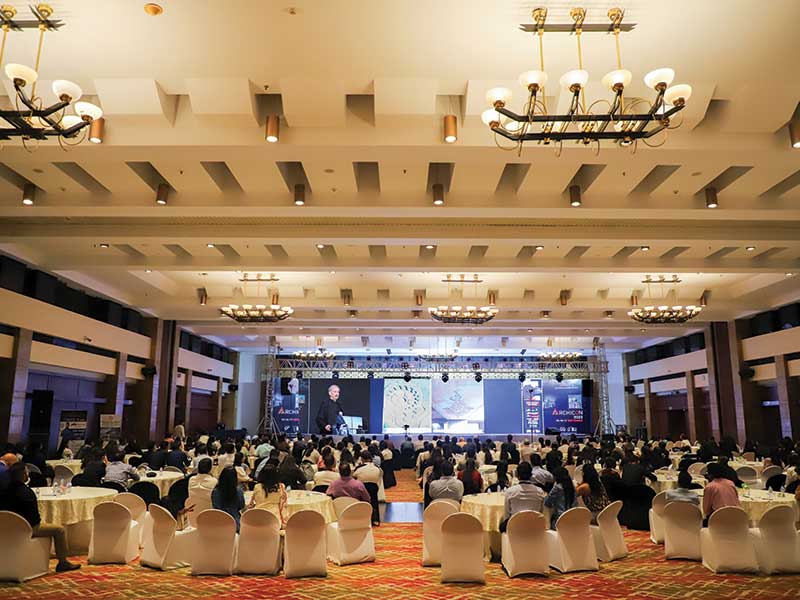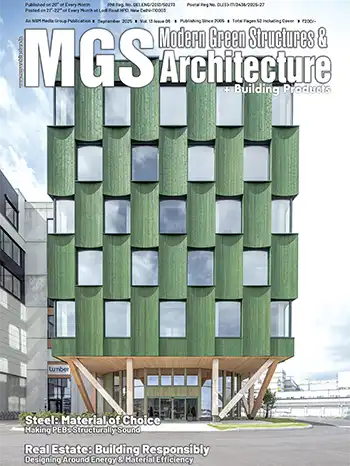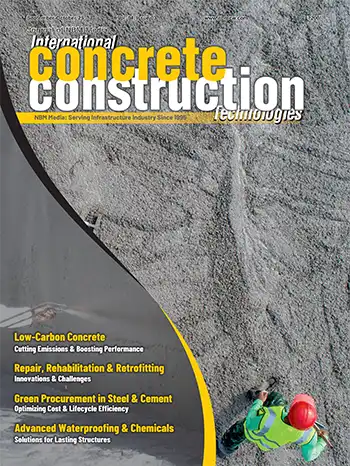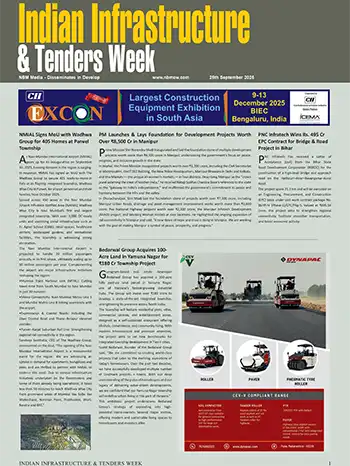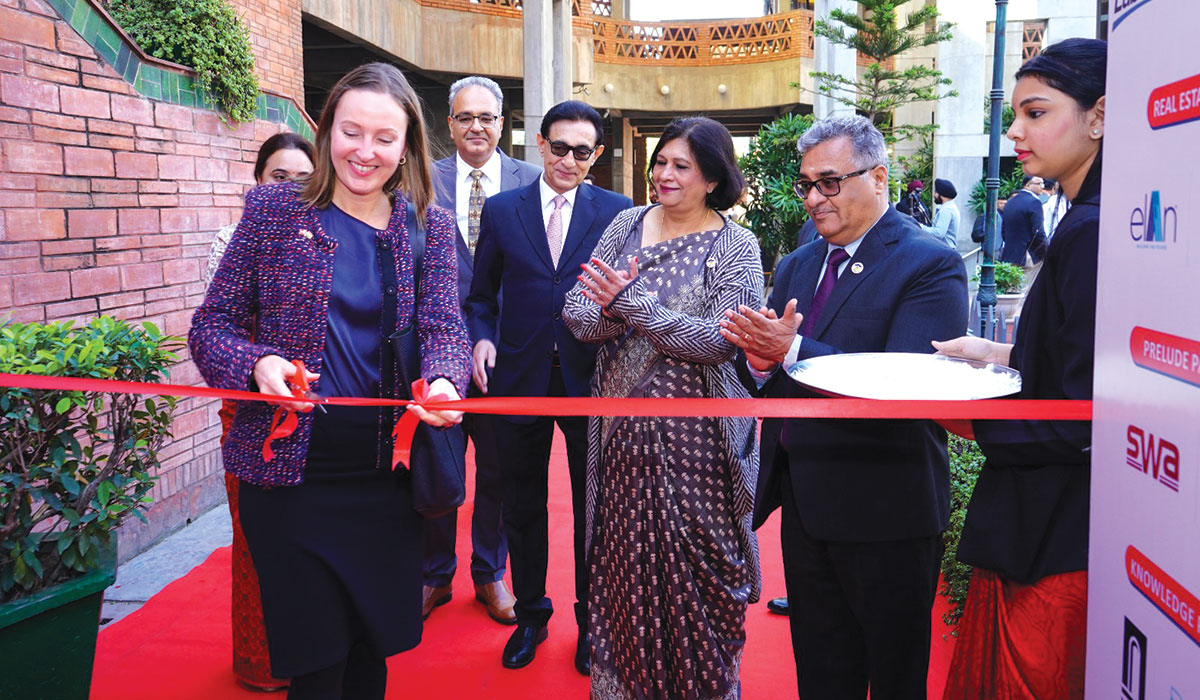
The 16th GRIHA Summit, organized by GRIHA Council in New Delhi, focussed on the theme ‘Accelerating Climate Action in the Built Environment’ which underscored the critical role of transitioning the built environment towards sustainability as a cornerstone of effective climate action.
As the 2030 deadline for global climate commitments nears and the 2050 target for decarbonizing the building and construction sector looms large, the Summit provided a platform to explore opportunities for climate-resilient development, breaking the cycle of rising heat, energy demand, and carbon emissions.
The GRIHA Summit also aligns with India’s aspirational vision of Viksit Bharat @2047, providing a comprehensive roadmap that integrates sustainable urban development with the nation’s goals of economic growth, social progress, environmental sustainability, and good governance.
The Summit brought together industry leaders, policymakers, academicians, representatives from government and private institutions, and community representatives to explore actionable pathways for a climate-resilient built environment. Participants included architects, urban planners, product manufacturers, researchers, financial institutes, and sustainability experts.
With four plenary sessions and six thematic tracks, the Summit addressed pressing issues towards accelerating climate action at various levels including policy advocacy, united stakeholder action, energy transition, and promoting smart and resilient infrastructure development. Thought-provoking discussions and deliberations revolved around managing urban heat, exploring biophilic architecture; innovative construction materials; incentivizing for propelling a low-carbon development; and the role of communities in transforming the existing infrastructure.
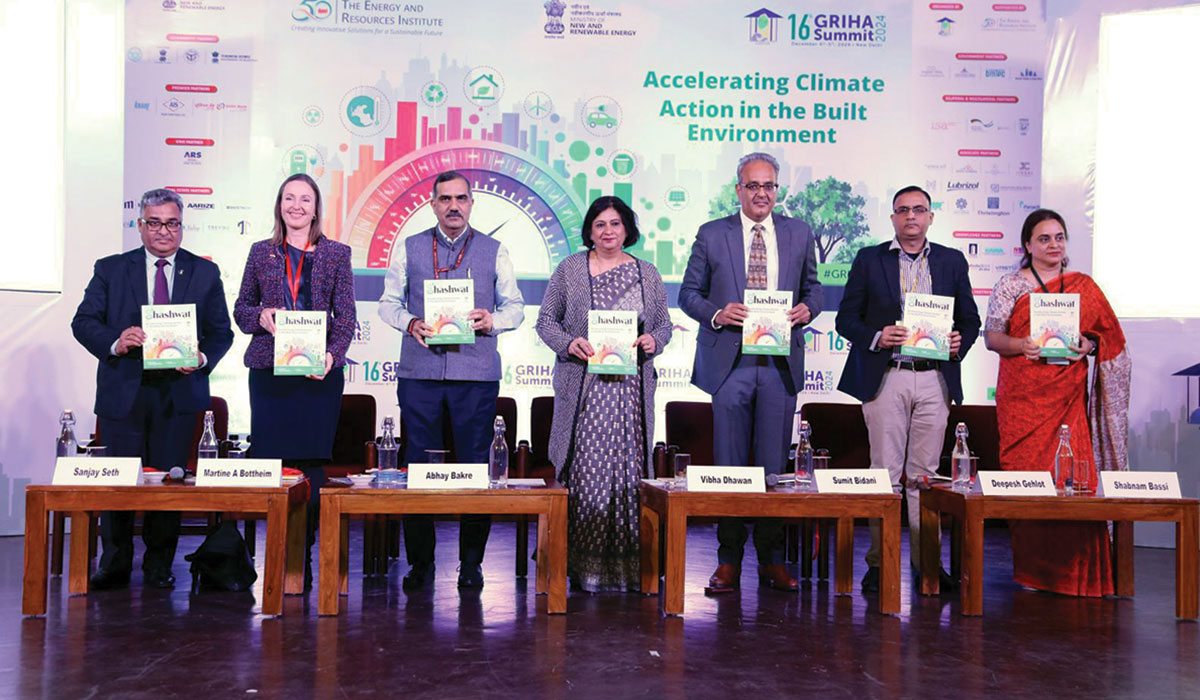 Shashwat magazine launch
Shashwat magazine launchDr Vibha Dhawan, President, GRIHA Council, and Director General, TERI, stated, “As a comprehensive platform, this Summit facilitates deliberation on the interdependence of various stakeholders in building inclusive, climate-resilient infrastructure. Our overarching aim is to unite everyone in recognizing the vital role each individual and organization plays in combating climate change. Challenges will always arise, but what truly matters is how we face them and create a lasting change.”
Sanjay Seth, Vice President and CEO, GRIHA Council, and Senior Director, Sustainable Infrastructure Programme, TERI, opined, “Every building, every design, and every choice we make has the power to redefine the future of our planet. Accelerating climate action in the built environment is not just a goal—it is our collective responsibility to shape a sustainable future for generations to come.” He emphasized the need for innovation and collaboration. “The conversations we’ve had, the ideas we’ve shared, and the solutions we’ve proposed over these past two days will play a crucial role in transforming our built environment. It is our collective responsibility to leverage our expertise and passion to drive positive change. As we reflect on our journey, we also celebrate the exceptional achievements that are setting new standards for sustainable excellence,” he stated.
Abhay Bakre, Mission Director, National Green Hydrogen Mission, Ministry of New and Renewable Energy (MNRE), Government of India, said, “The building sector stands out as one of the most promising sectors to act as an enabler of achieving our sustainability goals. GRIHA Council’s effective solutions and recommendations address critical issues of climate change which aligns with the national and global climate action goals. Builders, professionals, and stakeholders worldwide should aspire to achieve the benchmarks set by GRIHA ratings to drive sustainable practices.”
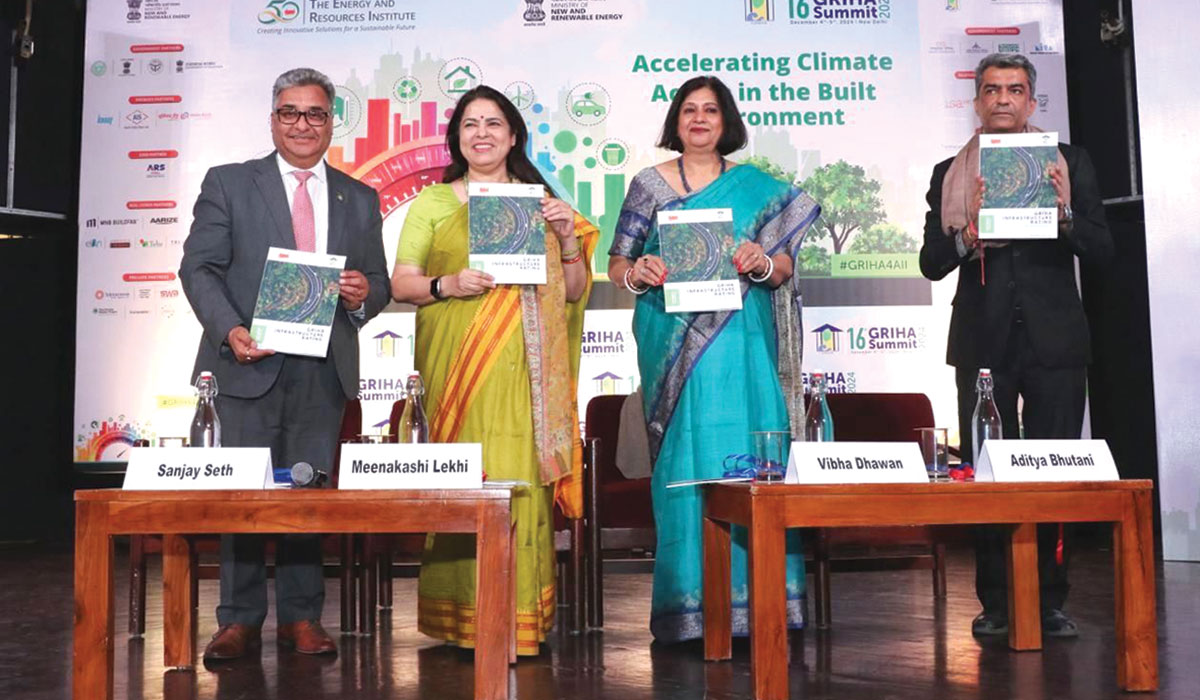 Launch of GRIHA Infrastructure Rating for Highways
Launch of GRIHA Infrastructure Rating for HighwaysMeenakashi Lekhi, Former Minister of State for External Affairs and Culture, and Member of Parliament, called for unified efforts to achieve climate resilience. “Let’s not let others dictate our agenda. It’s time to run our own green agenda, rooted in our heritage and guided by GRIHA standards. GRIHA symbolizes India’s commitment to sustainability and green living. With the concepts of reusing and recycling, we have to get our existing buildings compatible with the standards provided by GRIHA,” she said.
Martine Aamdal Bottheim, Deputy Head of Mission and Minister Counsellor, The Royal Norwegian Embassy, highlighted Norway’s commitment to supporting sustainable solutions. She remarked, “Global discussions now focus on transitioning to zero-carbon buildings, adopting circular economy principles, and enhancing urban climate resilience. The GRIHA Summit is very relevant from this global perspective.” She also highlighted the collaboration between Norway and India in the area of blue economy, circular economy, renewables, food security, research, and higher education.
Sumit Bidani, CEO, Knauf India, said, “Sustainability is not just a buzzword; it is an absolute necessity. We believe innovation is key, which is why we are actively exploring advanced materials and solutions to tackle the challenges of climate change.”
Aditya Bhutani, Director and COO, AIS GlassXperts, laid emphasis on the role of partnerships in advancing sustainability. “Net zero isn’t just an opportunity; it’s the reality we must achieve. Change doesn’t require grand gestures; small acts, multiplied by millions, can transform the world,” he remarked.
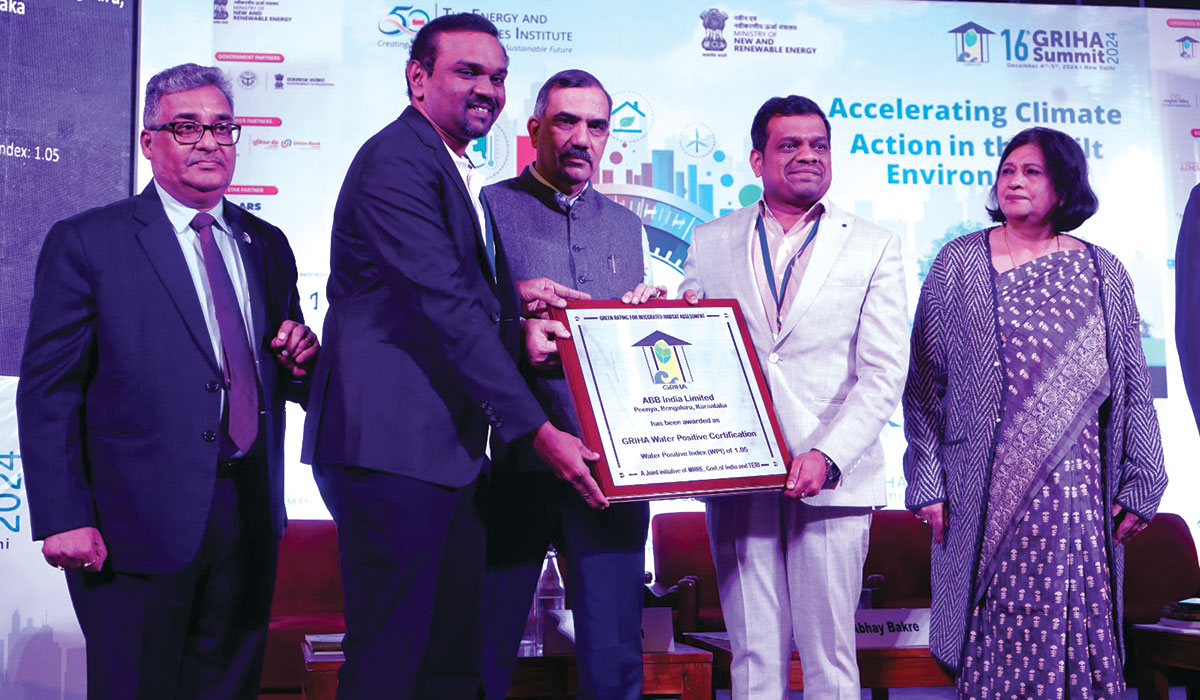
An MoU was signed between GRIHA Council and Kendriya Vidyalaya Sangathan (KVS), Ministry of Education, Government of India, to promote sustainability in KVS schools. The MoU was formalized by Deepesh Gehlot, Joint Commissioner, Kendriya Vidyalaya Sangathan and Shabnam Bassi, Deputy CEO and Secretary, GRIHA Council and Director, Sustainable Buildings, TERI. The partnership aims to transform KVS schools into green and sustainable campuses by implementing the GRIHA for Existing Schools rating system. This initiative will actively engage both teachers and students, fostering environmental awareness and sustainable practices within the school ecosystem.
The occasion marked the unveiling of two key publications by the Council: GRIHA V 6.0 and Shashwat – Let Nature Be, the Council’s annual magazine. GRIHA V. 6.0 integrates user feedback, market insights, and practical considerations to set new benchmarks for resource efficiency.
An exhibition titled ‘Sanchay’ showcased advancements in industry trends that are propelling a paradigm shift in sustainable materials and technologies, and live models from an architectural design competition. At the GRIHA award ceremony, GRIHA 5-star and 4-star Rated Projects were felicitated. Winners of the SHAPE Design Trophy organized in collaboration with Vellore Institute of Technology and ZEMCH Network were also awarded.
A highlight of the Summit was the launch of two new sustainability frameworks: the GRIHA Rating for Ports and the GRIHA Infrastructure Rating for Highways, which aim to promote environmentally responsible practices in these sectors by providing standardized frameworks for assessing and enhancing infrastructure performance.
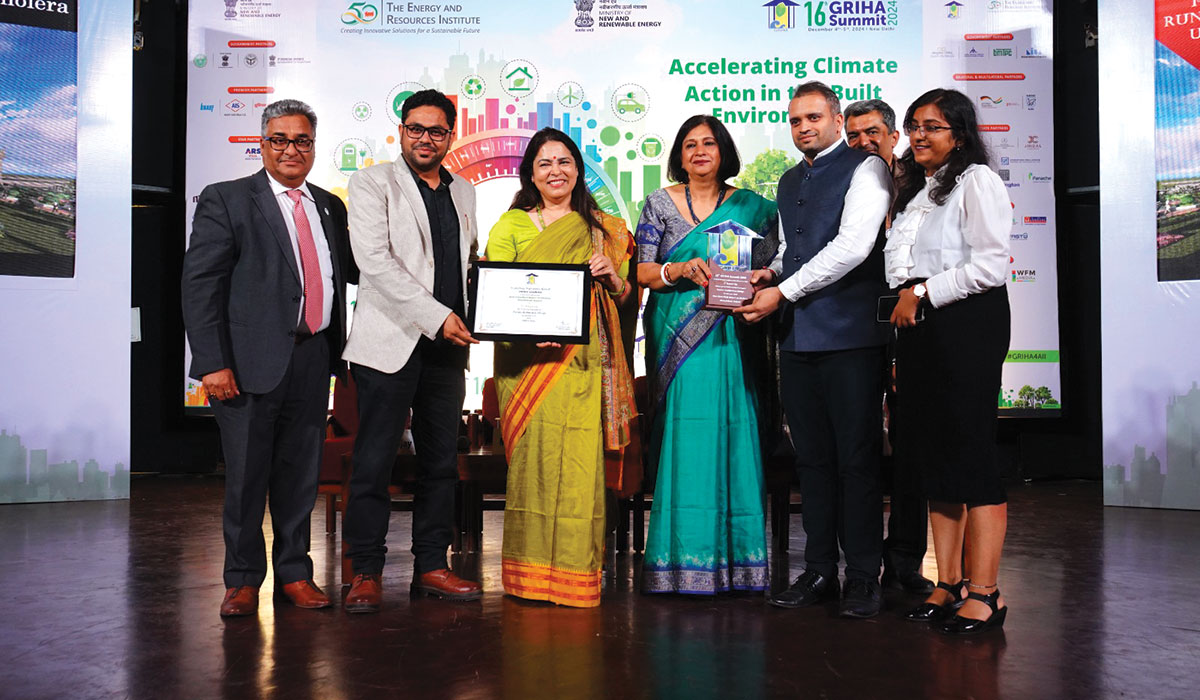
During the Summit, a side event titled ‘Scaling Up Building Integrated Photovoltaics (BIPV) Technologies in Buildings in India’ was organized in collaboration with GIZ India, Ornate Solar, and The Energy and Resources Institute (TERI). The session focused on addressing challenges such as balancing aesthetics with efficiency, assessing the lifecycle impacts of BIPV materials, and evaluating the economic feasibility of large-scale applications.
At an award ceremony, GRIHA 3-star and 2-star Rated Projects were felicitated by eminent dignitaries and winners of GRIHA Exemplary Awards and GRIHA Exhibition Design Competition were awarded.
GRIHA Council expressed gratitude to its partners, including the Ministry of New and Renewable Energy, State Governments of Uttar Pradesh, Telangana, Assam, and Rajasthan, as well as industry leaders such as Knauf, Asahi Glass, ARS Steel, and Alloy International, Union Bank of India, and many others.







